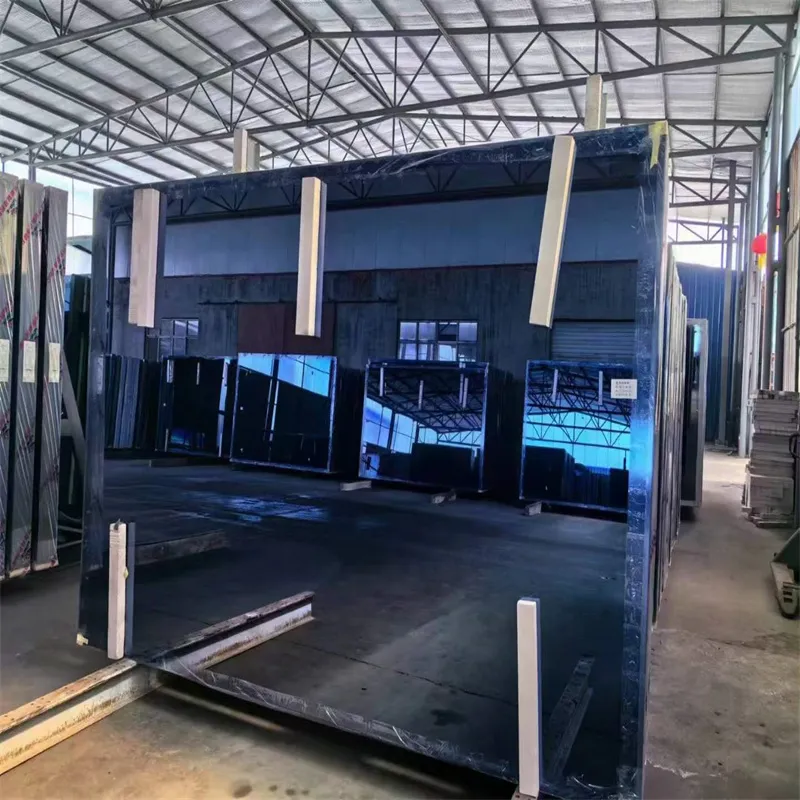10 月 . 10, 2024 11:45 Back to list
what is float glass used for
Understanding Float Glass and Its Uses
Float glass is a type of glass that is widely utilized in various industries due to its unique manufacturing process and superior characteristics. The term float refers to the method by which this glass is produced, resulting in a smooth, flat surface that is ideal for numerous applications. In this article, we will explore what float glass is, how it is made, and its diverse uses in everyday life.
What is Float Glass?
Float glass is a type of flat glass produced by floating molten glass on top of molten tin. This method was invented in the 1950s by Sir Alastair Pilkington, leading to significant advancements in glass manufacturing. The process involves pouring molten glass into a bath of molten tin, where it spreads out and forms a uniform thickness as it cools. The result is a clear, flat sheet of glass with excellent optical clarity, smoothness, and strength.
One of the key features of float glass is its high level of flatness and absence of distortion, which makes it an ideal choice for applications requiring precision and clarity. Float glass can be manufactured in various thicknesses and sizes, making it versatile for different uses.
How is Float Glass Made?
The manufacturing process of float glass typically involves several key steps
1. Raw Material Preparation The primary raw materials for float glass are silica sand, soda ash, and limestone. Other additives can be included to enhance specific properties.
2. Melting The raw materials are mixed and heated in a furnace at high temperatures, typically around 1,700 degrees Celsius (3,092 degrees Fahrenheit), to create molten glass.
3. Floating The melted glass is carefully poured onto a bath of molten tin. Due to the lower density of glass, it floats on top of the tin, spreading out evenly to create a flat surface.
4. Annealing After the glass has reached the desired thickness, it is gradually cooled in an annealing lehr. This process helps relieve internal stresses in the glass.
5. Cutting and Finishing Once cooled, the glass is cut into sheets of various sizes. Further processing may include coating, polishing, or tempering to enhance durability and functionality.
what is float glass used for

Uses of Float Glass
Float glass is renowned for its versatility and is used in a wide range of applications, including
1. Windows and Doors One of the most common uses of float glass is in windows and doors. Its clarity and flatness provide excellent visibility and aesthetics, while its strength ensures safety and durability.
2. Furniture Float glass is often used in furniture design, including tabletops, shelves, and display cases. Its surface can be easily cleaned and maintained, making it a practical choice for various furniture items.
3. Automotive In the automotive industry, float glass is used in vehicle windows and windshields. The glass can be treated for safety and shatter resistance, making it ideal for use in cars.
4. Architectural Applications The construction industry extensively uses float glass for building facades, partitions, and skylights. Its ability to allow natural light into spaces while providing thermal insulation makes it a popular choice in modern architecture.
5. Mirrors Float glass can be coated with silver or aluminum to produce mirrors. Its smooth surface allows for clear reflections, making it ideal for both decorative and practical applications.
6. Glassware and Containers Float glass is also used to manufacture glass containers and bottles. Its clarity and strength make it suitable for packaging various products, from beverages to cosmetics.
7. Solar Panels In the renewable energy sector, float glass is utilized in the production of solar panels. Its properties help in enhancing the efficiency and durability of solar technologies.
Conclusion
Float glass is an essential material in our daily lives, with a wide range of applications across various industries. Its unique manufacturing process results in a product with superior flatness, clarity, and strength. As technology advances, the uses of float glass continue to evolve, contributing to innovation in fields such as architecture, furniture design, and renewable energy. Understanding the significance of float glass helps us appreciate its impact on both functional and aesthetic aspects of modern living.
-
Wired Glass: A Strong and Secure Glass Solution for Various Applications
NewsNov.04,2024
-
Tinted Glass: A Stylish and Functional Choice for Modern Homes
NewsNov.04,2024
-
The Elegance and Versatility of Silver Mirrors
NewsNov.04,2024
-
The Advantages of Copper Free Mirrors
NewsNov.04,2024
-
Tempered Glass: A Reliable Choice for Modern Applications
NewsNov.04,2024
-
Pattern Glass: Stylish and Functional Glass for Modern Design
NewsNov.04,2024
Related PRODUCTS














